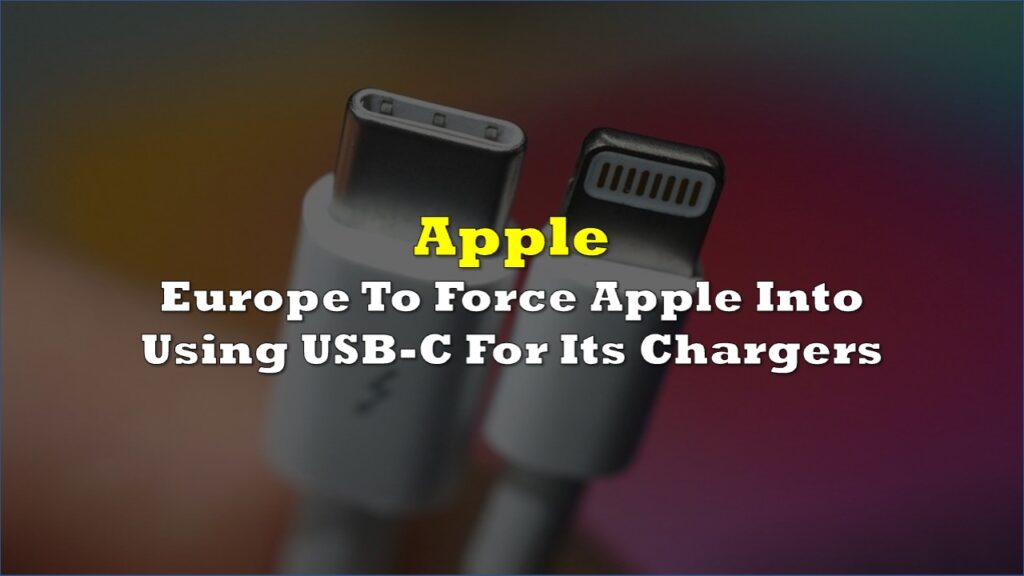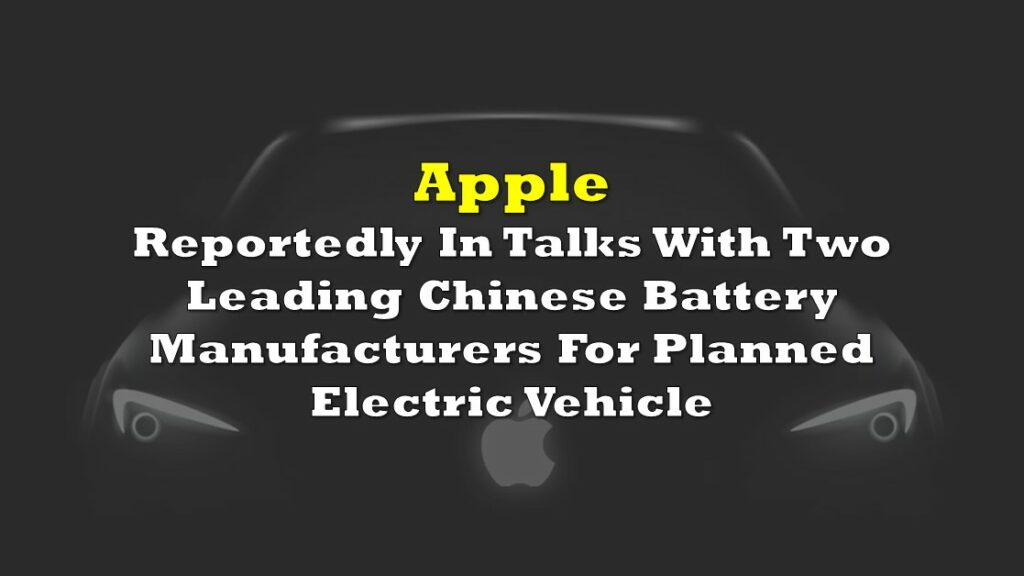The U.S. Environmental Protection Agency (EPA) has identified at least 19 potential violations of the Resource Conservation and Recovery Act (RCRA) at Apple Inc.’s (NASDAQ: AAPL) semiconductor fabrication facility in Santa Clara, California. This comes after a series of inspections in August 2023 and January 2024, prompted by a public tip and complaint from former Apple employee Ashley M. Gjøvik.
Gjøvik has been outspoken about her suspicions and findings regarding hazardous waste mismanagement by Apple. Gjøvik recounted her experiences and discoveries in several posts on X, highlighting severe health issues she believes were caused by exposure to industrial chemicals vented from Apple’s facility.
“Apple is doing literal actual goddamn silicon fab 0.2 miles (0.3 km) from the apartment where I got so sick I thought I was dying & Apple vented that shit into the air from their roof & the yard next to their ‘gas bunkers’ right into my 3rd floor apartment,” Gjøvik posted in an X thread.
🧵In 2020, I nearly died from mysterious industrial chemical exposure at my home. Later I discovered my employer was dumping toxic waste into our windows from their Skunkworks semiconductor fab next-door. I tipped off EPA, who raided them in 2023. EPA just sent me the report 💀⬇️ pic.twitter.com/25C1Yz0ogK
— Ashley M. Gjøvik (@ashleygjovik) June 23, 2024
In a series of posts, Gjøvik detailed the EPA inspector’s findings, which included multiple containers of hazardous waste improperly stored in what she referred to as “the Bunker.” Among the containers, three had unknown contents, and all ten were undated and unanalyzed. Apple allegedly claimed the containers had been left there only that morning.
“If you’re thinking, ok that sounds dangerous, but I’m sure Apple was keeping an eye on things…The facility operated 24/7 but only M-F. On the weekends it was unattended & they didn’t monitor their waste. They also stopped weekly inspections after I learned what they were doing,” Gjøvik posted, along with images from the EPA report.
EPA Inspection Findings
The EPA’s comprehensive report, which Gjøvik has made publicly available, details numerous violations, including:
- Improper Waste Characterization and Treatment: Apple improperly characterized and treated hazardous waste without the necessary permits. A 1,700-gallon stainless-steel solvent waste tank was marked “Hazardous Waste” and used for accumulating spent solvent waste from R&D operations. The waste was managed as California Only Waste, but the EPA determined it should have been classified as ignitable hazardous waste (D001 Waste) under federal regulations.
- Illegal Transport and Disposal: From 2020 to 2023, Apple shipped numerous loads of improperly characterized waste to disposal facilities. Specifically, 83 shipments to World Oil Recycling were labeled as “Water with Solvents” but were ignitable waste.
- Hazardous Air Emissions: EPA inspections noted instances where Apple was venting volatile organic compounds (VOCs) from solvent tanks into the atmosphere, potentially affecting nearby residential areas, including Gjøvik’s apartment.
- Non-compliance with Land Disposal Restrictions (LDR): The report cited failures to comply with LDR requirements, resulting in improper treatment and disposal of hazardous waste streams.
- Improper Storage Practices: The EPA observed several smaller, non-permitted tanks of hazardous waste scattered around the plant, including highly flammable and corrosive chemicals that were improperly managed and labeled.
Photographs from the EPA report show clearly labeled hazardous waste tanks and documentation of improper handling and storage practices.
Alleged violations
The EPA report further highlighted that much of the solvent exhaust from the factory was vented out untreated from the main system. A separate illegal solvent treatment tank had its exhaust filtered through untested carbon boxes before being expelled through a small vent pointed down at the building. These activities reportedly lacked proper permits.
- Potential Violation #14: Apple shipped 83 shipments of waste designated as “Water with Solvents” to World Oil Recycling, mischaracterized as non-hazardous waste, which were actually ignitable.
- Potential Violation #15: Apple shipped approximately 145 shipments of waste to World Oil Recycling, also mischaracterized as non-hazardous.
- Potential Violation #11: EPA observed solvent waste vents connected to an “Activated Carbon” box without proper permits or adequate testing.
- Potential Violation #17: Apple’s emissions monitoring procedures were found inadequate, with calibrations of gas detectors performed only once before use.
- Potential Violation #5: EPA found a 55-gallon container of corrosive liquid with its cap removed to vent vapors, violating RCRA regulations.
Additionally, the EPA noted that Apple failed to conduct required weekly and daily inspections for hazardous waste management. The facility, operating 24/7 on weekdays but unattended on weekends, missed numerous inspection logs throughout 2023. Specifically, the facility did not perform daily inspections on 48 occasions over weekends between January and August 2023.
Gjøvik’s journey to uncover these violations involved meticulous documentation and relentless advocacy. She filed a formal complaint with the EPA in June 2023, met with investigators, and provided substantial evidence of the alleged misconduct.
In her tweets, Gjøvik mentioned, “I told US EPA I didn’t want my whistleblowing about the fab to be anonymous, and instead, that if EPA shows up onsite to inspect the plant, when they do, please have the EPA cops tell Apple: ‘Ashley says hi.’ It looks like EPA did what I asked.”
Despite the unannounced nature of the inspections, the EPA noted that Apple’s Environmental Health & Safety (EH&S) team was prepared for their arrival, possibly due to prior notification by city HazMat officials. This led to concerns that Apple may have had time to clean up or hide violations before the EPA could inspect.
Legal battle
Gjøvik has also taken legal action against Apple, filing a civil lawsuit that includes two toxic tort claims for Nuisance and Ultrahazardous Activities. She announced that the U.S. District Judge is allowing both claims to proceed, with the first case management conference scheduled for mid-July. Gjøvik highlighted the challenges she faces, stating, “Apple’s lawyers don’t want to talk to me now; & their primary defense continues to be highly inflammatory personal attacks.”
In addition to her civil case, Gjøvik is awaiting a decision from a U.S. Department of Labor Judge on whether she can add RCRA, Clean Air Act, and Toxic Substances Control Act (TSCA) retaliation claims to her case. She noted the possibility of the Department of Justice pursuing criminal charges against Apple.
The EPA has stated that these potential violations are still under review and has not yet finalized enforcement actions. Apple has not publicly commented on the specific findings but has previously emphasized its commitment to environmental compliance and sustainability.
Gjøvik continues to push for accountability and transparency, urging the public to remain vigilant and informed about corporate environmental practices. “After discovering what Apple did, I then spent three months requesting records & digging through regulatory filings to learn more – which led me to file a complaint to US EPA,” she posted.
“Apple can keep flailing around, but we’re in federal court now & they will be forced to face the music,” she warned.
Information for this briefing was found via the sources mentioned. The author has no securities or affiliations related to this organization. Not a recommendation to buy or sell. Always do additional research and consult a professional before purchasing a security. The author holds no licenses.








